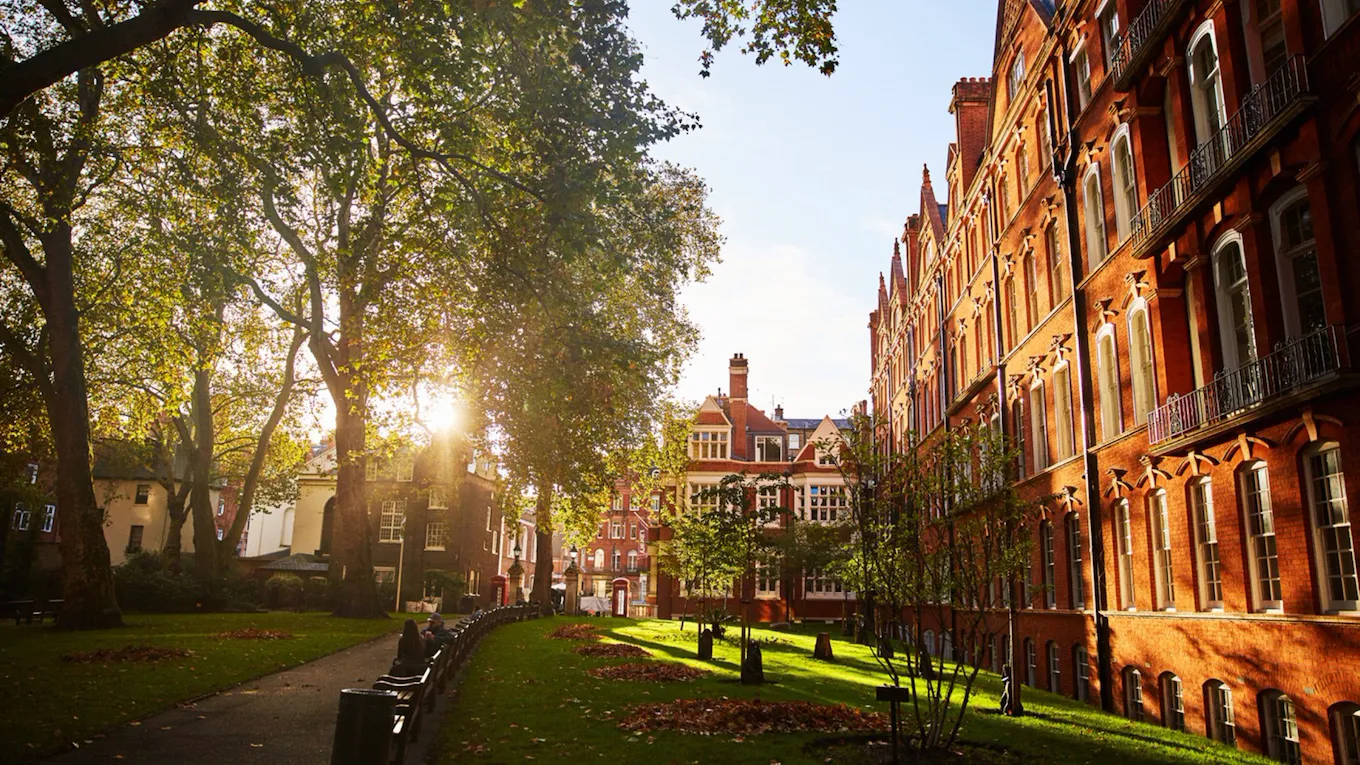Mayfair gardens: London’s prettiest squares

Brown Hart Gardens
Built in 1906 and located above the old Duke Street electricity substation, Brown Hart Gardens were conceived after local residents complained that they had lost their Duke Street Gardens when these were leased to Westminster Electricity Supply Company. The unusual roof garden measures 10,000 sq.ft. and features a domed pavilion, moveable plants and seating and a café at its western end. It was voted the best public space at the New London Awards and, amusingly, is probably one of the few places where quarrelling is forbidden by law.
Berkeley Square
Berkeley Square gardens date back to the 1660s when Berkeley House was built for the first Lord Berkeley of Stratton. Set out in an oval shape, with four grass quarters formed by two dissecting gravel paths, Berkeley Square has a pump house with a Chinese-style roof in its centre, erected in around 1800. In one of the corners, there is a marble statue of a nymph pouring water into a basin, by sculptor Alexander Munro, donated by the third Marquess of Lansdowne, and on the eastern side, there is a bronze sculpture of Velazquez’s Reina Mariana by Spanish artist Manolo Valdes, which depicts the queen in a tightly encased bodice. The large London plane trees here are some of the oldest in London and date back almost 250 years.
Grosvenor Square
One of London’s biggest squares, Grosvenor Square boasts two and a half hectares of pristine lawns. Originally constructed by Sir Richard Grosvenor in 1726, the garden was a real sensation when it first opened, being the first of its kind in London. The garden is surrounded by a holly hedge, and there is a statue of Franklin D Roosevelt in the centre of the north side of the garden. Frequented by local residents and office workers, there are currently plans underway to create a further subterranean garden up to 50 metres across, in a bid to increase biodiversity.
Hanover Square
Laid out in the late 1710s, Hanover square was named in honour of George I and is today known for hosting performances of the London Handel Festival. After World War II, the gardens were re-landscaped with diagonal paths, and a pond with a fountain was introduced. The gardens, which cover around four acres of ground, have plenty of statues and sculptures; there is a huge bronze statue of William Pitt by Sir Francis Chantrey, which was erected in around 1831, and another more recent sculpture, from 2012, called Emergence, by David Breuer-Weil. It consists in craggy-looking figures resembling rough rock that relate to Adam’s origins from the earth.
Mount St Gardens
Just off Mount Street, tucked behind mansion blocks, you will come across the secluded Mount Street Gardens, with its plane trees, tropical plants, lawns and paths. Many of the benches lining these paths have been donated by Americans connected to the nearby US Embassy, grateful for this peaceful slice of greenery in central London. During the English Civil War, the site was part of a huge fortification known as Oliver’s Mount, which later became a burial ground for St George’s, Hanover Square. In 1889 the public gardens were formally established with stone gate piers which still exist today.
Mayfair’s gardens are only a short walk away from The Dorchester.